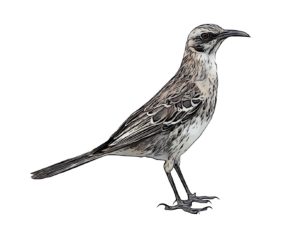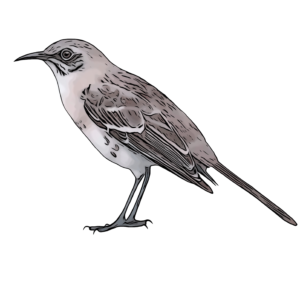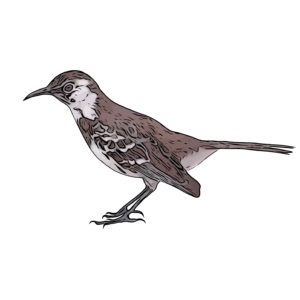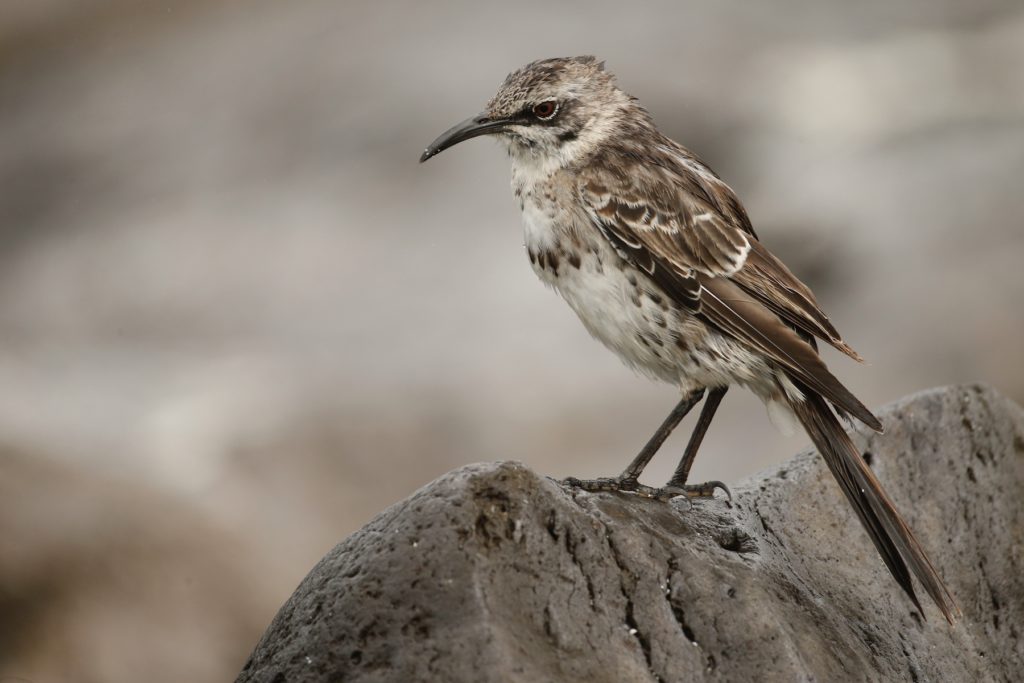
Espanola Mockingbird
Where to Look
- Punta Suarez
- Gardener Bay
Similar Galapagos Species

Galapagos Mockingbird

San Cristobal Mockingbird

Floreana Mockingbird

Identification
The only mockingbird which occurs on Espanola and Gardner.
Description
The largest and palest grey of the Galapagos’s Mockingbirds. Both males and females have typical black facial markings, particularly long decurved bills, grey and brown scalloped backs and pale grey underparts with indistinct brown markings on their breast and more prominent flecks on their flanks. Males are slightly larger than females. Juveniles are similar to adults but have more prominent breast markings.
Galapagos Distribution
Restricted to Espanola and adjacent Gardner Island in SE Galapagos. A visit to Espanola, where it is common for these mockingbirds to aproach visitors in search of food and water – even landing on their heads or backpacks, almost garuntees sightings of this species.
Global Distribution
Endemic to the Galapagos.
Status in the Galapagos
A common and extremely bold, albiet localised, endemic resident.
Conservation
Although Espanola is free of introduced species and this Mockingbird occurs in high densities across the island, it is listed as vulnerable due to its small range (roughly 50km2). This makes the species extremely vulnerable to climate change induced drought and related water or food shortages. Furthermore, if an allien species was accidentally introduced to Espanola, the effects could be disasterous.
